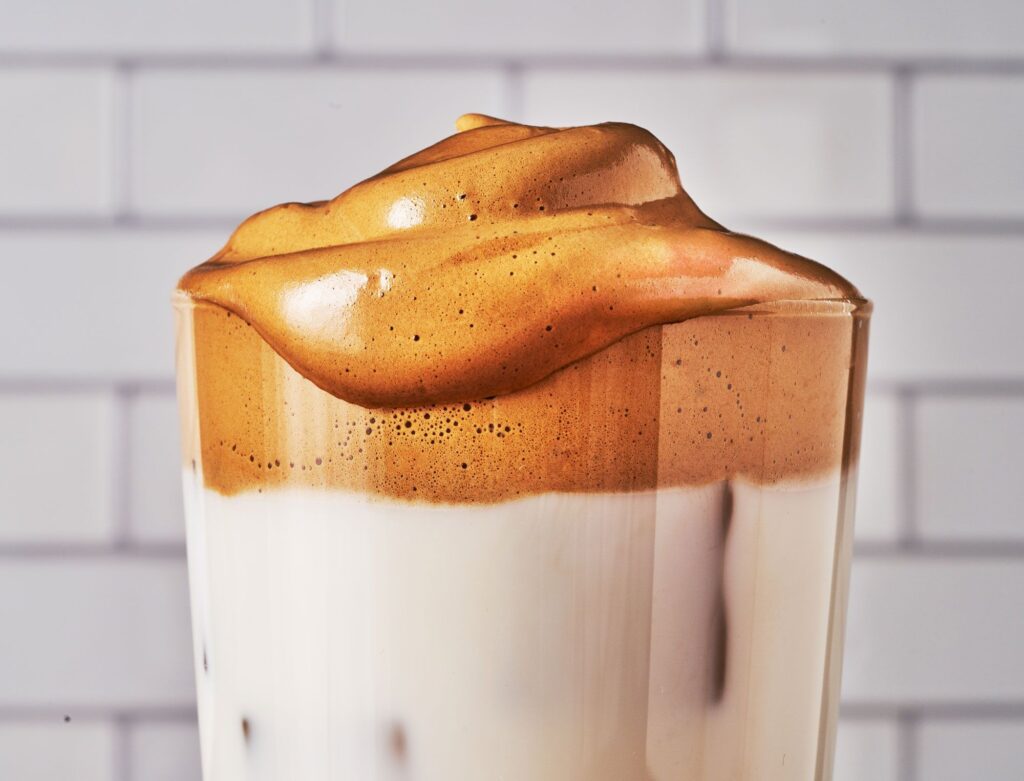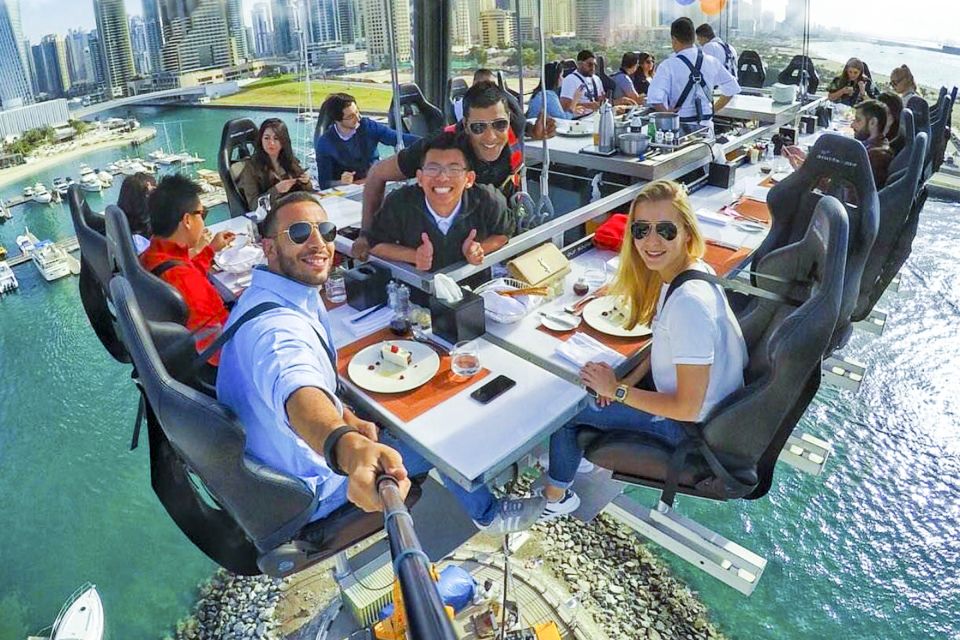The Food Trend That Keeps on Giving: Air
Several years ago, food futurologist, Dr. Morgaine Gaye, proclaimed “the biggest ingredient of the future is air”.1 While she was mostly referencing air’s ability to modify texture or create volume, we think her vision may have been more prophetic. We see an astounding number of relationships between air and what and how we eat, cook and shop. Behold the many examples:
Texture Transformations
- Whipped. The popularity of Dalgona coffee,2 and whipped lemonade3 have driven lifestyle publications like Taste of Home, Eating Well and Delish to publish how-to content like “9 Whipped Drink Recipes You Can Make at Home”, and “Here’s How to Turn Anything into a Viral Whipped Drink”.
- Bubbles. Innovations like Nestle’s Aero bar, bubble teas, and hot chocolate bombs have helped drive interest in other, edible bubbles, e.g., Cocktail Smoke Bubbles, Jolly Rancher Candy Bubbles, and Bubble Cake.4

Cooking Methods
- Air fryers. The use of rapid air technology – a heating element and fan that “fries” without oil – has elevated air fryers to “must-have” status, with sales increases of 76% over the last two years.5
Diet Trends
- Mindful eating. The meditative practice of “making eating an intentional act instead of an automatic one,” encourages us to appreciate our food, pay attention to our thoughts surrounding it, engage our senses…and slow down.6 As it happens, eating slowly involves breathing evenly and this leads to the optimal sensory experience.7
- Breatharians. The fringe group of people who believe food is unnecessary for life, and attempt to sustain themselves via sunlight, air, and spiritual energy.8
Restaurant Experiences
- Indoor air quality. The pandemic drove some operators to install air purifiers to improve the safety of employees and guests.9 Post COVID-19, advanced technology is expected to “usher in a new data-driven relationship with indoor air” via real-time readings – particularly relevant to guests in areas subject to heavy pollution and wildfires.10
- Open air dining. According to a recent survey, 8 in 10 diners want to see outdoor seating options continue to grow.11
- Dinner in the Sky. A pop-up restaurant suspended 150 feet in the air by a crane, serving panoramic views to diners in nearly 50 countries since 2006.12

Sustainability
- Carbon Labeling. Food production – especially animal agriculture – is a serious contributor to air pollution. A new study suggests that “the average air quality-related harm of red meat to human health is between two and fifteen times greater than that of other foods such as eggs, dairy, poultry, nuts and seeds and plant-based…namely because of the manure, fertilizer and food crops required to produce it.”13 With 6 in 10 consumers aiming to “reduce their carbon footprint”,14 companies and brands like Mondelez,15 Nespresso,16 Meijer,17 and Panera,18 have responded with “climate friendly”, “climate neutral”, and “climate positive” goals. According to analysts, carbon claims “have become an expectation” to help consumers evaluate a brand…as well as their own footprint.19
- Carbon Capture. One of the latest developments in sustainability is that of “recaptured carbon”, whereby industrial emissions are recycled and repurposed into new products, e.g., CO2 transformed into other materials.20 An example? Air Vodka, made of hydrogen (from water), and CO2 (from ethanol plants) run over a catalyst and distilled into vodka, resulting in a one-liter bottle responsible for removing a full pound of CO2 from the air.21
- Air Protein. Technology to turn air into microbial protein is being tested in several corners of the world. Whether it’s eventually developed into animal feed or food for humans remains to be seen,22 but there have been several companies focused on creating meat from air. The process typically involves a combination of CO2, oxygen, nitrogen, renewable energy, mineral nutrients, and water manipulated into a protein that can be used to create meat alternatives, pastas, cereals, beverages and more.23

As you can see, air is connected to food in more ways than just packaging filler, compressed air on an assembly line, or the removal of it in the vacuum sealing process. There are multiple ways to leverage air to be on-trend. For our short list, we recommend experimenting with “airy” textures, developing air fryer-friendly foods and recipes, and exploring carbon-related claims for your packaging.
[1] “Food futurology: What will we be eating 10 years from now?”, Food Navigator, 12/22/20
[2] “What is Dalgona coffee? The whipped coffee trend taking over the internet during coronavirus isolation”, The Conversation, 4/22/20
[3] “WTF is whipped lemonade? The creamy frozen drink that’s better than frosé”, Cnet, 8/28/21
[4] YouTube
[5] “Over 25 Million Air Fryers Sold the Last Two Years Making It A Must-Have Kitchen Appliance”, NPD, 1/26/22
[6] “Mindful Eating 101 – A Beginner’s Guide”, Healthline, 6/19/19
[7] “Mechanics of Eating: Why You’ll Miss Flavor If You Scarf Your Food”, NPR, 11/10/15
[8] “The People Who Think Air Is Food”, GQ, 9/07/17
[9] “A Fresh Breath of Air: Why One Restaurant Installed an Air Purifier”, Hospitality Technology, 3/25/21
[10] “How one restaurant’s experiment may help diners breathe safely”, The Washington Post, 4/14/21
[11] “What Diners Want: How Dining is Changing in 2022”, OpenTable survey, N=21,000 diners in the U.S. and Canada, 1/26/22
[12] “Dinner In the Sky Serves Guests Gourmet Food While Suspended 150 Feet in The Air”, Delish, 6/18/19
[13] “Animal production responsible for vast majority of air quality-related health impacts from U.S. food”, University of Minnesota, 5/10/21
[14] “4 Trends Affecting Food Marketers in 2021”, Marketing Insider, 1/26/21
[15] “8 carbon-neutral brands aiming to cut the food and beverage industry’s emissions”, FoodDive, 4/22/22
[16] “Nespresso: ‘Every cup of our coffee will be carbon neutral by 2022”, Beverage Daily, 9/17/20
[17] “Meijer to halve carbon emissions by 2025”, Supermarket News, 1/19/22
[18] “Panera Bread becomes first national chain to label entrees as climate friendly”, CNBC, 10/14/20
[19] “Why pollution is the next big food and beverage opportunity”, Food Navigator, 12/02/21
[20] “Creative carbon capturing”, JWT Intelligence, 5/21/21
[21] “Vodka Made from CO2? Entrepreneurs Find Surprising Uses for Captured Carbon”, WSJ, 3/03/22
[22] “Growing food from air ‘more efficient’ than growing crops, study finds”, Food Navigator, 6/23/21
[23] “Air-based meat is here – but what exactly is it?”, Food Business News, 11/25/19

